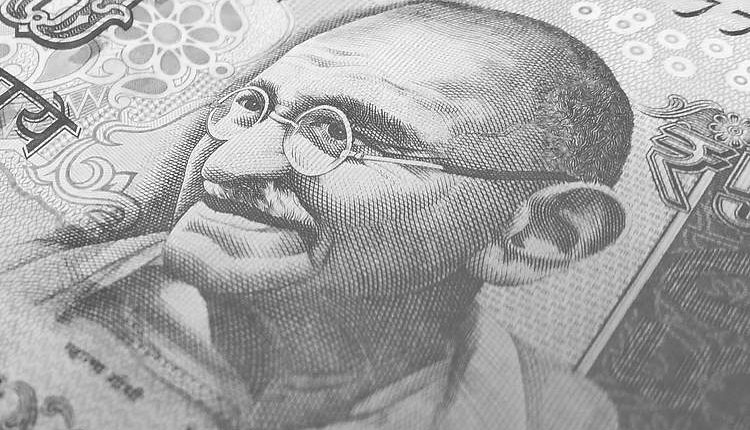- The Indian Rupee weakens in Tuesday’s Asian session.
- The INR is facing some selling pressure as Trump’s tariff promise boosts the USD.
- The FOMC Minutes will be the highlight on Tuesday.
The Indian Rupee (INR) attracts some sellers on Tuesday after reaching its strongest level in over two weeks. The renewed US Dollar (USD) demand driven by strong US economic data, escalating tensions in the Russia-Ukraine conflict and US President-elect Donald Trump’s plan on new tariffs exert some selling on the local currency.
However, inflows from MSCI’s index rebalancing, declining US bond yields and lower crude oil prices could lift the INR in the near term. Investors will monitor the FOMC Minutes, which are due later on Tuesday. Also, the US Conference Board’s Consumer Confidence, New Home Sales, the Richmond Fed Manufacturing Index and the Dallas Fed Services Index will be released.
Indian Rupee remains vulnerable despite inflows from MSCI’s index rebalancing
- Indian equities are estimated to see passive inflows of about $2.5 billion on account of the rebalancing of MSCI’s equity indexes, according to estimates by Nuvama Alternative & Quantitative Research.
- “The dollar-rupee pair is anticipated to trade within a defined range in the medium term, with support at 83.80 and resistance around 84.50. The overall bias, however, tilts toward the downside,” said Amit Pabari, managing director at CR Forex.
- Chicago Fed President Austan Goolsbee said on Monday that he foresees the US central bank continuing to lower rates toward a stance that neither restricts nor promotes economic activity.
- Minneapolis Fed President Neel Kashkari noted that it is still appropriate to consider another interest-rate cut at the Fed’s December meeting.
- Traders pared back their expectations for an interest rate cut in December. Futures traders are now pricing in 55.9% odds that the Fed will cut rates by a quarter point, down from around 69.5% a month ago, according to the CME FedWatch Tool.
USD/INR’s longer-term constructive bias is under pressure
The Indian Rupee weakens on the day. The USD/INR maintains the bullish outlook above the key 100-day Exponential Moving Average (EMA) on the daily chart, even though the price has broken below an ascending trend channel. The 14-day Relative Strength Index stands above the midline near 54.60, supporting the buyers in the near term.
The all-time high and the upper boundary of the trend channel of 84.52 appears to be a tough nut to crack for the bulls. A decisive break above this level could pave the way to the 85.00 psychological level.
On the flip side, the potential support level emerges in the 84.00-83.90 zone, representing the round mark and the 100-day EMA. A breach of the mentioned level could expose 83.65, the low of August 1.
Indian Rupee FAQs
The Indian Rupee (INR) is one of the most sensitive currencies to external factors. The price of Crude Oil (the country is highly dependent on imported Oil), the value of the US Dollar – most trade is conducted in USD – and the level of foreign investment, are all influential. Direct intervention by the Reserve Bank of India (RBI) in FX markets to keep the exchange rate stable, as well as the level of interest rates set by the RBI, are further major influencing factors on the Rupee.
The Reserve Bank of India (RBI) actively intervenes in forex markets to maintain a stable exchange rate, to help facilitate trade. In addition, the RBI tries to maintain the inflation rate at its 4% target by adjusting interest rates. Higher interest rates usually strengthen the Rupee. This is due to the role of the ‘carry trade’ in which investors borrow in countries with lower interest rates so as to place their money in countries’ offering relatively higher interest rates and profit from the difference.
Macroeconomic factors that influence the value of the Rupee include inflation, interest rates, the economic growth rate (GDP), the balance of trade, and inflows from foreign investment. A higher growth rate can lead to more overseas investment, pushing up demand for the Rupee. A less negative balance of trade will eventually lead to a stronger Rupee. Higher interest rates, especially real rates (interest rates less inflation) are also positive for the Rupee. A risk-on environment can lead to greater inflows of Foreign Direct and Indirect Investment (FDI and FII), which also benefit the Rupee.
Higher inflation, particularly, if it is comparatively higher than India’s peers, is generally negative for the currency as it reflects devaluation through oversupply. Inflation also increases the cost of exports, leading to more Rupees being sold to purchase foreign imports, which is Rupee-negative. At the same time, higher inflation usually leads to the Reserve Bank of India (RBI) raising interest rates and this can be positive for the Rupee, due to increased demand from international investors. The opposite effect is true of lower inflation.
Read the full article here

